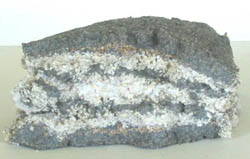Hello,
Our Kids Science Newsletter is published each month. The newsletter includes a question of the month, current science events, science trivia and a simple science activity that is fun for kids of all ages.
Question of the Month
Why does the ocean have tides?
(answer follows the simple science experiment)
Science Current Events
- Minivan Size Fireball Explodes Over California
- A minivan size fireball lit up the skies of Northern California and western Nevada on Earth Day, April 22, this year. When the meteor exploded it produced a sonic boon that was heard northern Arizona, Nevada and the foothills of the Sierra Nevada Mountains. It rained meteorites all over the ground near Coloma, California after it broke apart. It is the rarest type of meteorite that falls to the Earth on our planet. Collectors rushed to the site for an astronomical treasure hunt.
- Fox Likes Sports Gear More Than Henhouse
- An amateur petanque player lost 38 metal balls that he used when playing a popular southern France game of Petanque Boules. He left the balls outside at night after playing the game. After losing the 38 metal balls he put a camera to catch the thieves. He found a fox was stealing the balls at night by grabbing them in his jaws and hauling them off. The fox must have liked the metal balls more than the hens in a nearby chicken house.
- Did You See the Supermoon?
- Did you see the "supermoon" on Saturday, May 5th? The supermoon appears 14% larger and 30% brighter than it does at other times. The reason for these differences is because the moon does not travel around the Earth in a perfect circle. Instead it travels in an orbit that is oval shaped. On May 20 the moon will be in its new phase and will pass between the Earth and the Sun creating a solar eclipse. The solar eclipse will be visible in the western part of the United States including Reno, Albuquerque, Zion National Park and parts of the Grand Canyon.
Science Trivia
- Flies and other insects walk on walls with clawlike structures that help the insect hold onto different types of surfaces including glass. The claws are used to grip tiny irregularities in the surface they are walking on. Some insects also have a kind of adhesion when the surface they are walking on is very smooth. The insects hold on using the adhesive action of hairs located on sticky pads on the feet.
- In a lifetime of driving the average American drives approximately 627,000 miles. This is like driving 25 times around the Earth. The driver uses enough gasoline to fill 3 fuel tankers.
- The body protects itself from too much heat or cold by perspiring or shivering. Shivering is caused by the muscles twitching and giving off heat. Perspiration is the body's own air-conditioner. It evaporates from the skin and cool you down.
- When a dolphin is sick or injured, its cries of distress summon immediate aid from other dolphins. The other dolphins try to support the sick or injured dolphin by bring it to the surface so it can breathe.
Simple Science Activity
Making Sandstone
Introduction
Sandstone forms from sand-size particles. In this activity you will create sandstone that has layers of dark and light layers of sand.

Materials
- Light-colored sand
- Dark-colored sand
- White school glue
- Paper cup
- Tinfoil
- Vaseline
- Plastic spoon or small twig
- Water
Directions
- Mix together 2 parts glue to 1 part water in a paper cup until thoroughly blended.
- Cut a piecde of tinfoil 6 x 8 inches.
- Fold up the sides to create a flat bottom container about the size of a wooden matchbox.
- Grease the inside of the container with Vaseline so you can remove the tinfoil after the sandstone is dry.
- Pour a think layer of glue on the bottom of your tinfoil container.
- Sprinkle a layer of dark sand over the glue covering it completely.
- Add another layer of glue on top of the sand.
- Sprinkle a layer of light sand on top.
- Allow the sandstone to dry overnight.
- Repeat the previous five steps for several days.
- Allow the sandstone to dry for several days after you finish adding the sand and glue for the last time before removing the tinfoil.
Science behind the experiment
Sandstone forms when sand-sized particles of rock form sedimentary layers. The sand particles can be from any type of crystal or rock. It is the size of the particles that forms the sedimentary rock if it is sandstone. Large rocks bound together to form conglomerates. Siltstone if made from silt-size particles. Most sandstone is light-colored because quartz is light and resists weathering.
Answer to the question of the month
Why does the ocean have tides?
The rotation of the Earth causes the tides as the Moon's gravity pulls the water toward it. There are two high tides that occur each day as the water bulges away the Earth's surface due to the pull of gravity by the Moon. The low tides occur as the water flows toward the bulges elsewhere. Spring tides are not tides that form in the spring but instead are high tides when both the Moon and Sun are lined up and their gravity combines to create higher than normal tides.
Please share the newsletter
Please share this newsletter with a friend by forwarding it to them. If you know of a group who might enjoy the newsletter please let them know about it also.
Comments? Ideas? Feedback? I'd love to hear from you. Just reply to this Just For Kids Science Newsletter and tell me what you think!
Sincerely yours,
Myrna Martin
Websites:
www.RingofFireScience.com
www.Kids-Fun-Science.com
www.Kids-Earth-Science.com
www.The-Science-Site.com
|



